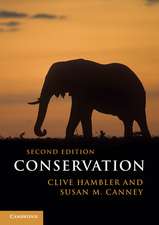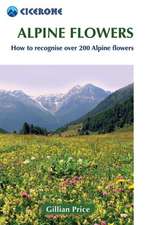The Family Orchidaceae in the Serra do Japi, São Paulo state, Brazil
Editat de Emerson Ricardo Pansarin, Ludmila Mickeliunas Pansarinen Limba Engleză Hardback – 5 oct 2010
Preț: 1671.21 lei
Preț vechi: 2038.06 lei
-18% Nou
Puncte Express: 2507
Preț estimativ în valută:
319.79€ • 334.57$ • 265.65£
319.79€ • 334.57$ • 265.65£
Carte disponibilă
Livrare economică 12-26 martie
Preluare comenzi: 021 569.72.76
Specificații
ISBN-13: 9783211997543
ISBN-10: 3211997547
Pagini: 289
Ilustrații: XII, 287 p. 403 illus. in color.
Dimensiuni: 210 x 277 x 20 mm
Ediția:2011
Editura: SPRINGER VIENNA
Colecția Springer
Locul publicării:Vienna, Austria
ISBN-10: 3211997547
Pagini: 289
Ilustrații: XII, 287 p. 403 illus. in color.
Dimensiuni: 210 x 277 x 20 mm
Ediția:2011
Editura: SPRINGER VIENNA
Colecția Springer
Locul publicării:Vienna, Austria
Public țintă
ResearchCuprins
<P>Index of species<P/>
<P>The family Orchidaceae<P/>
<P>Nomenclature and classification<P/>
<P>List of species of orchids occurring in the Serra do Japi<P/>
<P>The Serra do Japi<P/>
<P>Objectives and justificative<P/>
<P>Material and methods<P/>
<P>Taxonomic treatment of orchid species occurring in the Serra do Japi Glossary<P/>
<P>Bibliography<P/>
<P>Legends of figures<P/>
<P>The family Orchidaceae<P/>
<P>Nomenclature and classification<P/>
<P>List of species of orchids occurring in the Serra do Japi<P/>
<P>The Serra do Japi<P/>
<P>Objectives and justificative<P/>
<P>Material and methods<P/>
<P>Taxonomic treatment of orchid species occurring in the Serra do Japi Glossary<P/>
<P>Bibliography<P/>
<P>Legends of figures<P/>
Notă biografică
Emerson R. Pansarin is an expert in vegetal biology. He is a professor at the São Paulo University (USP) in southeastern Brazil. His main research interests are systematics, phylogenetic relationships (based on morphological and molecular characters), reproductive biology and pollination systems of members of the orchid family and other aquatic monocotyledons, such as Alismataceae and Limnocharitaceae. Among Orchidaceae Professor Pansarin has focused his investigations on the subfamily Vanilloideae. His current projects include the investigation of systematics, biogeography and evolution of pollination systems in Vanilloideae, taxonomic revision of the genus Epistephium and a floristic survey of Orchidaceae occurring in the interior of São Paulo state, Brazil.
Ludmila M. Pansarin is a Brazilian biologist and holds a Master in Botany. Currently she is a Ph.D. candidate in Campinas State University's Plant Biology program (São Paulo state, Brazil). Her main research interests include the investigation of reproductive biology, pollination systems and anatomy of secretory structures of orchid family members. Among Orchidaceae Ms. Pansarin has focused her investigations on Stanhopeinae, developing studies about the evolution of pollination systems among evolving members of this euglossine-pollinated subtribe. Furthermore, she has investigated the pollination and the reproductive biology of orchids pollinated by oil-collecting bees, such as Cyrtopodiinae and Oncidiinae, and has conducted a floristic survey of Orchidaceae occurring in the interior of São Paulo state, Brazil.
Ludmila M. Pansarin is a Brazilian biologist and holds a Master in Botany. Currently she is a Ph.D. candidate in Campinas State University's Plant Biology program (São Paulo state, Brazil). Her main research interests include the investigation of reproductive biology, pollination systems and anatomy of secretory structures of orchid family members. Among Orchidaceae Ms. Pansarin has focused her investigations on Stanhopeinae, developing studies about the evolution of pollination systems among evolving members of this euglossine-pollinated subtribe. Furthermore, she has investigated the pollination and the reproductive biology of orchids pollinated by oil-collecting bees, such as Cyrtopodiinae and Oncidiinae, and has conducted a floristic survey of Orchidaceae occurring in the interior of São Paulo state, Brazil.
Caracteristici
Brazilian forests are one of the richest in species of orchids. This book is the first evolving orchids of Brazilian semi-deciduous mesophytic forests
All species are illustrated with colour photos
Atlantic rain forests (sensu lato) actually are reduced to only 6 % of its original extent but include many undescribed species. Therefore, preservation of this biome is necessary, made possible by research and information transfer
All species are illustrated with colour photos
Atlantic rain forests (sensu lato) actually are reduced to only 6 % of its original extent but include many undescribed species. Therefore, preservation of this biome is necessary, made possible by research and information transfer










